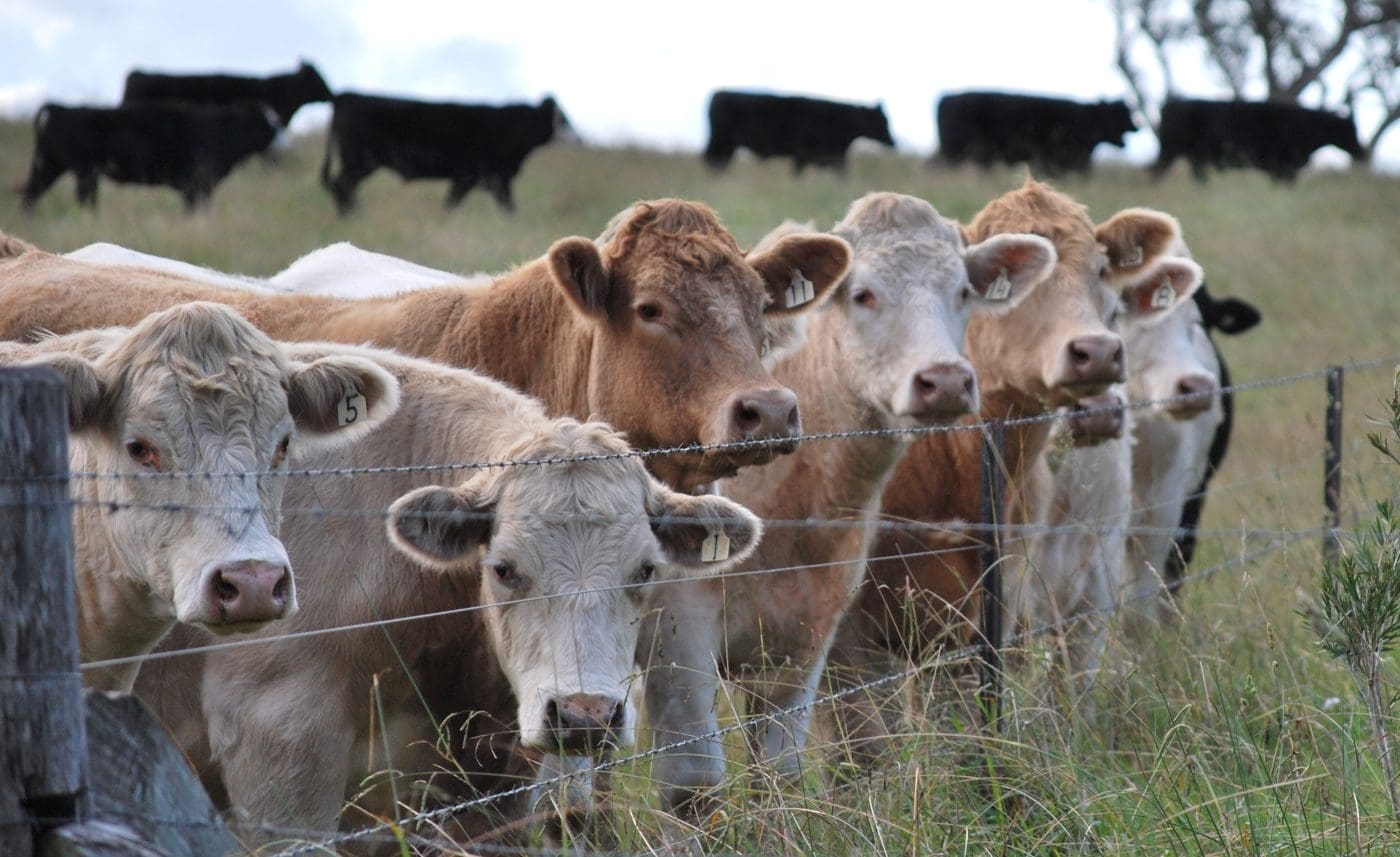Use this cattle per acre calculator to find out how many cows can graze on a certain area of land. Read on to learn about Animal Unit and Animal Unit Month, and how different types of pasture affect how many cows can graze on a certain area of land.
If you want to know how much space a cow needs, you’ve come to the right place!
Raising beef cattle can be a lucrative endeavor for Aussie farmers and ranchers. However, to maximize productivity and profitability it’s important to stock an appropriate number of cattle based on your available land. So how many beef cattle per acre should you have in Australia? Let’s take a detailed look.
Key Factors That Determine Stocking Rate
Several key factors affect how many head of cattle can be sustainably raised per acre of land:
-
Forage production – The productivity of your pastures determines how much grass is available for grazing. Better quality pastures can support more animals.
-
Supplemental feeding – Providing supplemental hay or grain in addition to pasture grazing may allow for heavier stocking rates
-
Breed of cattle – Smaller breeds like Angus require less forage than larger cattle like Brahmans.
-
Land quality – More fertile soils and favorable rainfall support greater forage growth and stocking rates.
-
Rotational grazing – Dividing land into paddocks and rotating cattle allows pastures to rest and regrow, supporting more animals.
Typical Stocking Rates in Australia
Typical beef cattle stocking rates in various regions of Australia are:
-
Northern Australia
- Extensive grazing – 1 beast per 8-15 acres is common in large rangeland operations.
-
Southern Australia
- Improved pastures – 1 beast per 1-3 acres is achievable with cultivated grasses like ryegrass.
- Native grasslands – Stocking rates of 1 beast per 4-8 acres are typical.
-
Temperate regions
- Improved pastures – Up to 1 beast per acre can be sustained.
- Native pastures – 1 beast per 3-5 acres is common.
Higher rainfall areas and irrigated lands can support even greater stocking densities of 2+ cattle per acre.
Stocking Rate Recommendations
To maximize productivity without overgrazing, here are some general stocking rate guidelines for beef cattle in Australia based on pasture type:
- Native grasslands – 1 beast per 5-10 acres
- Improved pastures – 1 beast per 1-3 acres
- Rotational grazing – 1 beast per 1-2 acres
- Irrigated/high rainfall pastures – up to 2 beasts per acre
Higher rates may be possible with sufficient fertilization, irrigation, and rotational grazing. Monitor pasture growth and adjust stocking rates accordingly. It’s ideal to have some reserve forage production beyond what cattle consume.
Other Factors Influencing Stocking Rates
Here are some other considerations when determining appropriate beef cattle stocking rates:
-
Animal weights – Stocking rate guidelines generally apply to 1000 lb cattle. Adjust rates based on average weights.
-
Breeding herds – Need more acreage per head than growing/finishing cattle.
-
Pasture management – Higher stocking densities require more intensive pasture management.
-
Terrain – Steep, rocky, swampy or densely treed areas provide less usable forage.
-
Fencing – Smaller paddocks allow better pasture rotations and stock control.
-
Water availability – Cattle need good access to clean water sources.
-
Soil conservation – Avoid overgrazing that exposes soil to erosion.
Benefits of Optimal Stocking Rates
Running the right number of cattle for your land resources provides many benefits:
- Prevents overgrazing and land degradation
- Maintains healthy, productive pastures
- Reduces supplemental feed costs
- Improves cattle performance and health
- Maximizes beef production per acre
- Results in greater operational sustainability
Carefully consider all the factors that influence carrying capacity and stock conservatively. You can always increase stocking rates later, but overgrazing is hard to reverse. With the right stocking density for your conditions, you’ll raise happy, productive cattle and productive, sustainable pastures.

How many cows can graze on 5 acres?
You should be able to graze from 2 to 4 cows on average pasture per every 5 acres. However, this number may rise to 20 assuming excellent pasture conditions and applied irrigation.
Tame pasture condition classes explanations
If you want to learn more about different pasture condition classes, check the definitions by Alberta Forage Manual:
|
Category |
Excellent |
Good |
Fair |
Poor |
|---|---|---|---|---|
|
Potential yield of the area |
75-100% |
60-75% |
50-60% |
33-50% |
|
Production from desirable, adapted grass and legumes |
95% |
90% |
60% |
Less than 50% |
|
Production from weeds or undesirable plants |
Less than 5% |
Less than 10% |
20% or more |
50% or more |
|
Fertility program |
Average to above average |
Average |
Below average or non-existent |
No fertility program |
Remember that the numbers in the table and the numbers you get from our cattle per acre calculator are just rough guesses. The real yield of a pasture varies depending on the types of grass and legumes that are growing there. Also, forage production changes throughout the year.
Do We Have Enough Land For Our Cattle?
FAQ
How many cows can you have per acre in Australia?
How many cows can you raise on 1 acre?
How many acres do you need for 100 cows?
How many cows are on 50 acres?
